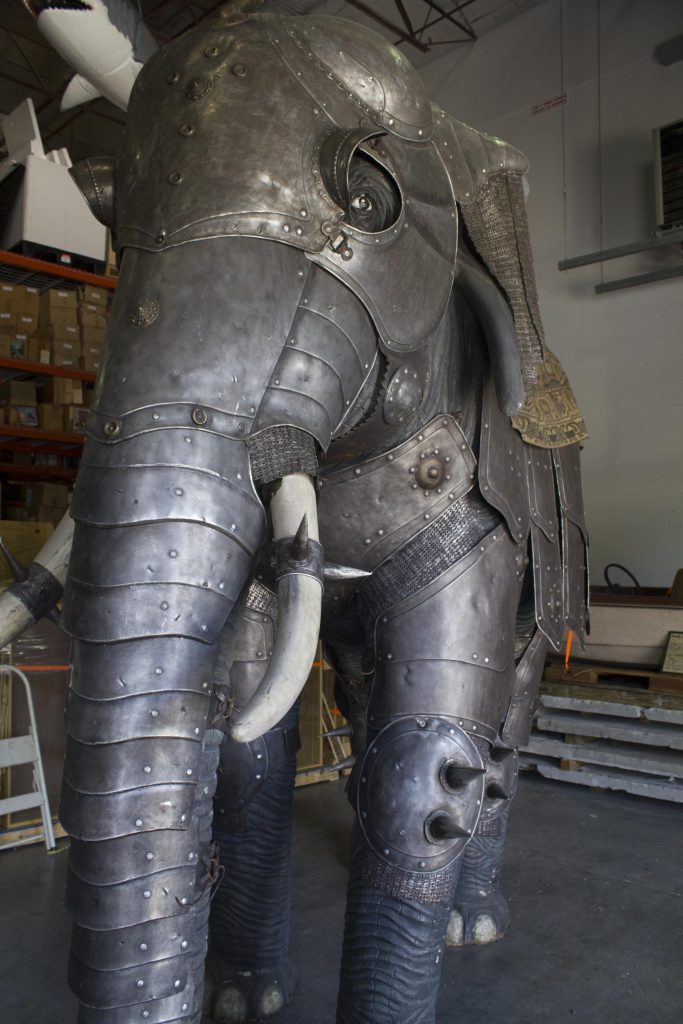In This Episode
Today: Elephant Armor
Share & Subscribe
If you liked the show, please share it with your peeps. Remember to SUBSCRIBE to our channel to stay BION-informed!

Ripley’s found this 18th-century Indo-Persian suit of elephant armor in Stratford-upon-Avon, England. This suit would fit an elephant standing over 12 feet high, and with the howdah—the carriage that sits on the elephant’s back—the exhibit is 16 feet tall overall!
Elephants have been trained for centuries to do man’s calling, everything from moving logs to walking on tightropes, to fighting battles. First employed in India, the practice of using elephants on the battlefield spread out across south-east Asia and westwards into the Mediterranean.
The first use of elephants on the battlefield occurred at Alexander the Great’s Battle of Gaugamela (331 BCE), when the Persians deployed fifteen elephants. Inspired by Hannibal’s use of elephants against the Roman Empire, the Mogul Emperors of India also introduced armored elephants as a weapon of war in the 18th century. Dressed in full armor, these huge animals were virtually invincible, and helped regional rajahs conquer even the most fortified towns and villages.
Nowadays, elephants play it safe, but still have some peculiar uses—one of our favorites, elephant polo!
Elephant Polo
The unusual sport of elephant polo was first played in India in the early 20th century, but the modern game originated in Nepal in 1983 where it is now a registered Olympic sport. Tournaments, played in Trunk Ball Thailand, Nepal and Sri Lanka, draw in 12 international teams every year from five different continents and are organized by the World Elephant Polo Association.
Each match involves 28 elephants, each with two players on its back. The game is played on an area the size of a football field and players wield polo sticks that are 6 to 9 feet in length!
The Rules:
● Elephants must not lie down in front of the goalmouth
● An elephant may not pick up a ball with its trunk during play
● Elephants must not step on the ball
● No team may have more than three elephants on one half of the field at any given time
● Sex, age or size of the elephant does not matter
● Men may use only one hand to hold onto the elephant, women may use two










[…] graveyards indeed exist. Some believe it has something to do with the perception of elephants as intelligent and mysterious creatures, while others think it was a way to lure big game hunters and British explorers into the […]